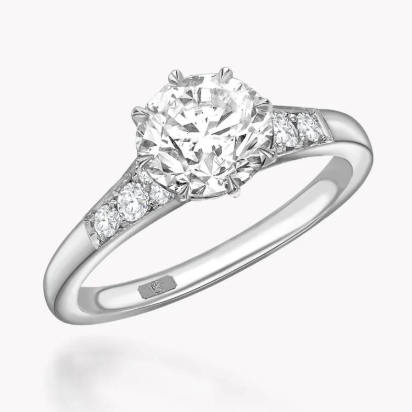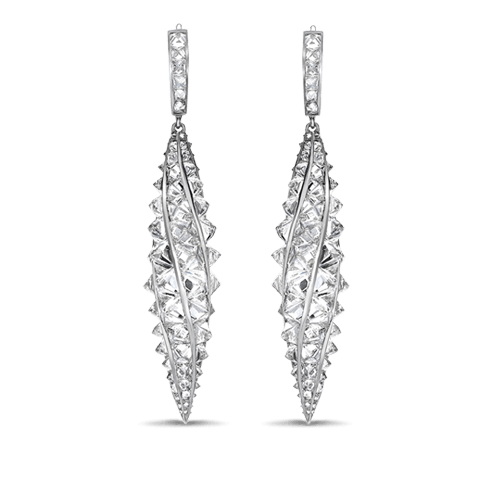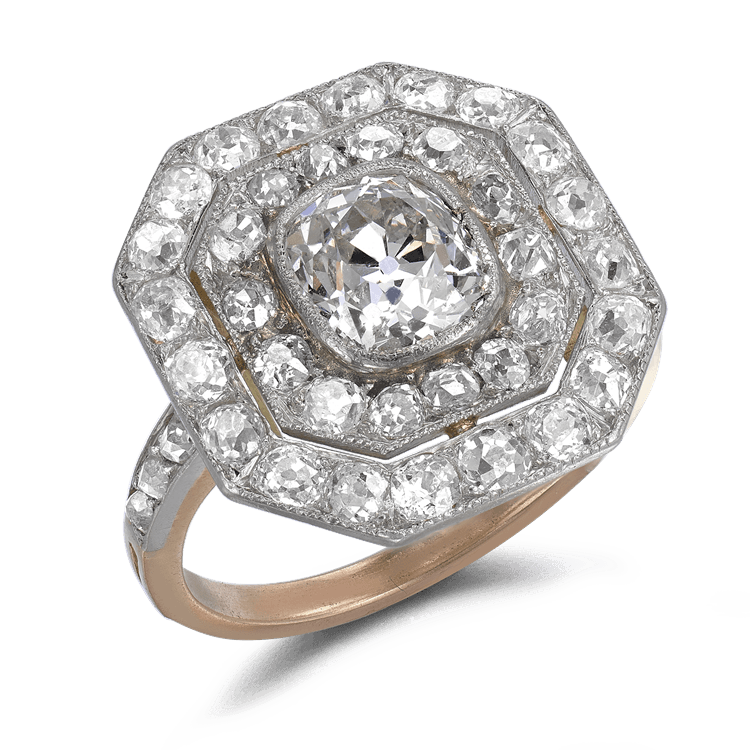The Diamond Clarity Guide
Clarity, one of the essential 4Cs of diamond evaluation, unveils the hidden stories within these precious gems. This diamond clarity guide delves deep into the fascinating realm of diamond inclusions, demystifying their impact on beauty, value, and character.
What is Diamond Clarity?
Every diamond is unique and carries its own set of internal ‘birthmarks’ or fingerprints due to the chemical processes involved in its creation, known as inclusions.
-(1).jpg)
Diamond Inclusions
Diamond inclusions are naturally occurring internal imperfections or flaws found within a diamond. These imperfections result from mineral or structural irregularities during the diamond's formation deep within the Earth. Inclusions can take multiple forms, including:
Crystals: Tiny mineral crystals trapped within the diamond as it forms.
Feathers: Small fractures that resemble feathers.
Clouds: Clusters of tiny pinpoint inclusions that can give the diamond a hazy appearance.
Needles: Long, thin crystals resembling needles.
Pinpoints: Very small, pinpoint-sized inclusions.
Included Crystals: Larger mineral crystals trapped within the diamond.
Internal Graining: Lines or streaks caused by irregular crystal growth patterns.
Diamonds with fewer and smaller inclusions are graded as having higher clarity and are generally considered more valuable. However, it's essential to note that some inclusions can be invisible to the naked eye and might not affect a diamond's overall beauty or structural integrity.
A skilled gemmologist will use specialised equipment, such as magnification tools or microscopes, to assess a diamond for inclusions and determine their effect on its overall aesthetics and worth.
The Diamond Clarity Chart
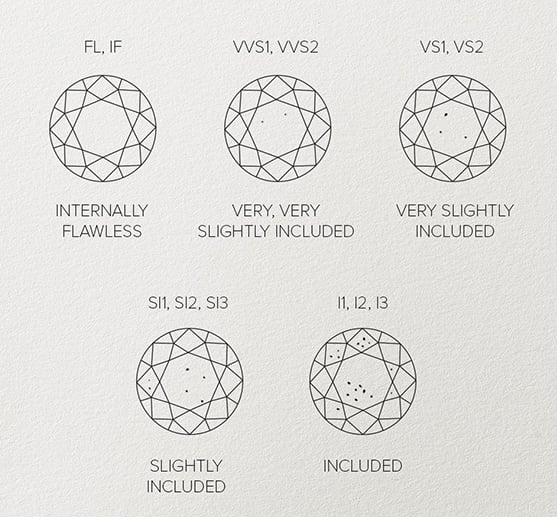
The GIA (Gemological Institute of America) grades a diamond’s clarity on a scale that ranges from Flawless (no internal inclusions or external blemishes) to Included (noticeable inclusions, visible to the naked eye). Diamonds with fewer imperfections are rarer and, therefore, more valuable.
Here are the GIA Diamond Clarity Scale categories:
Flawless (FL): Diamonds in this category have no internal or external inclusions or blemishes visible under 10x magnification. They are exceedingly rare and highly valuable.
Internally Flawless (IF): Diamonds in this category have no internal inclusions visible under 10x magnification. However, they might have minor blemishes on the surface.
Very, Very Slightly Included (VVS1 and VVS2): These diamonds have very minute inclusions that are extremely difficult to detect even under 10x magnification. VVS diamonds are highly prized for their clarity and rarity.
Very Slightly Included (VS1 and VS2): Diamonds in this category have minor inclusions that are visible under 10x magnification but are still relatively small and do not significantly affect the diamond's appearance.
Slightly Included (SI1 and SI2): Diamonds in this category have noticeable inclusions that are more visible under magnification and might be somewhat visible to the naked eye, particularly in SI2 diamonds.
Included (I1, I2, and I3): Diamonds in this category have inclusions that are readily visible both under magnification and to the naked eye. These inclusions can impact the diamond's brilliance and transparency.
Each category is further divided into specific grades, providing more detailed information about the diamond's size, type, location, and quantity of inclusions and blemishes. The GIA Diamond Clarity Scale helps professionals and consumers understand a diamond's clarity characteristics and make informed decisions when buying or evaluating diamonds.
-(1).jpg)
How Important is Diamond Clarity?
Diamond clarity is essential when assessing a diamond's overall quality and value. However, its importance can vary depending on personal preferences, the size of the diamond, the location of inclusions and blemishes, and the stone's overall appearance. Here's why clarity matters:
Aesthetics: Clarity affects a diamond's visual appearance. Diamonds with fewer inclusions and blemishes tend to appear more brilliant and transparent, allowing light to pass through without obstruction and can enhance the diamond's overall beauty and allure.
Value: Diamonds with higher clarity grades, such as Flawless or Internally Flawless, are rarer and more valuable due to their exceptional clarity characteristics. However, as you move down the clarity scale, the impact on value becomes more nuanced and might depend on other factors like size, cut, and colour.
Size: Inclusions and blemishes can be more visible in larger diamonds, as the flaws have more surface area to affect. As a result, higher clarity might be more important for larger diamonds, where inclusions can be more noticeable.
-(1).jpg)
Personal Preference: Some individuals prioritise clarity, aiming for diamonds with minimal or no visible inclusions. Others might find that certain inclusions are acceptable if they are not readily visible and do not affect the diamond's overall appearance.
Budget: Clarity can influence the cost of a diamond. While Flawless and Internally Flawless diamonds command higher prices, diamonds with slightly lower clarity grades (such as VS1 or VS2) can offer excellent value without compromising beauty.
Certainty: Clarity grading provides an objective way to assess a diamond's internal and external characteristics. It gives buyers assurance about what to expect in terms of flaws and helps them make informed decisions.
Ultimately, the importance of diamond clarity is a personal consideration.
While higher clarity grades are generally desirable, it's essential to balance clarity with other factors like cut, colour, and carat weight to find a diamond that meets your preferences, budget and desired visual appearance.
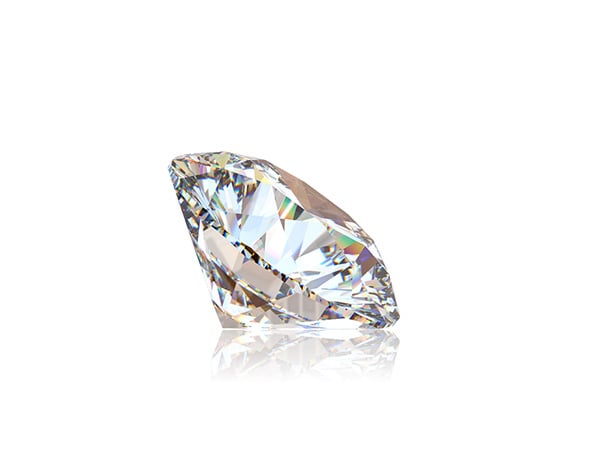
Does Clarity Affect the Diamond’s Sparkle?
Some inclusions will affect the brightness of a diamond, and others will affect its visual appearance. At Pragnell, we avoid any diamonds with these types of inclusions. The location of the inclusion will also impact the diamond's appearance. If an inclusion is in the centre of a diamond or close to the surface, it will be more noticeable. In contrast, if it lies closer to a side edge of the stone, it may be concealed by the jewellery setting, having less or no impact on the diamond's sparkle.
Diamond Clarity Standards at Pragnell
Pragnell engagement rings only feature diamonds with a clarity rating of SI2 (slightly included) or higher. Their inclusions are visible under 10x magnification, but our expert gemmologists ensure they are invisible to the naked eye.
Frequently Asked Questions
Below are the answers to our most commonly asked questions. Should you want to find out more please feel free to contact us and begin your Pragnell experience.
View By Category
Explore a selection of pieces from across the Pragnell range
Jewellery CLP Page
